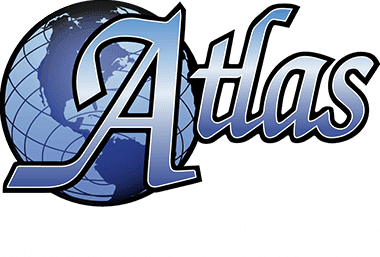FAQ
-
HVAC Questions
-
What is radon?Radon is an invisible, radioactive atomic gas that results from the radioactive decay of radium, which may be found in rock formations beneath buildings or in certain building materials themselves. Radon is probably the most pervasive serious hazard for indoor air quality in the United States and is probably responsible for thousands of deaths from lung cancer each year. Proper testing can be done for the presence of radon and measures taken to minimize its effects.
-
How does the Clean Air Act impact heating and cooling systems?The portion of the Clean Air Act that applies to the Heating, Ventilating, and Air Conditioning (HVAC) industry encourages the development of ozone-friendly substitutes for chemicals that contain ozone-destroying chlorine, which is called hydrochlorofluorocarbons (HCFCs). The chemical refrigerant of choice for more than four decades referred to as R-22, is in the HCFC category. R-22 is widely used in heat pumps and AC condensing units to heat and cool homes. Today, a refrigerant called R-410A is used because of its ozone-friendly properties.
-
Why can't you ad coolant to my system without checking for a leak or repairing an exiting leak?Since July 1, 1992, it is illegal to release refrigerants into the atmosphere, either intentionally or accidentally, because they can cause severe damage to the ozone layer. When refrigerants such as Chlorofluorocarbon (CFCs) are removed, they should be recycled to clean out any contaminants and returned to a usable condition.
-
What is meant by a 'ton' of refrigeration?Confusingly, the unit has little to do with weight, as used in everyday language. One ton of refrigeration is the term used to refer to 12,000 B.T.U.s/hour (British Thermal Units/Hour) of cooling effect. Thus, a condensing unit with a cooling capacity of 60,000 B.T.U.s/hour is said to have a capacity of 5 tons.
-
We are replacing our AC unit this season, what advice can you give me?Replacing your system is one of the biggest financial decisions you will make. The reason for this is that the life expectancy of a system is around 12 years. When choosing a contractor, pick a company to install the unit based on quality and customer service, not solely on price. The name-brand of the equipment is not as important as the installing contractor. Another thing to keep in mind when replacing a system is that the duct system you are connecting to is sealed tight with the proper amount of return air. With the new higher efficiency units, you also have to be careful that you replace your system with the proper sized unit so you don’t end up with a house that is cool but has high humidity. Do some homework, pick quality contractors, and find someone you trust and you will have a successful installation that will bring you years of comfort and the least amount of overall cost.
-
What the heck is a SEER and EER?Since January 2006, all residential air conditioners sold in the United States must have at least a 13 SEER. SEER is the abbreviation for Seasonal Energy Efficiency Ratio and it is a U.S. government standard energy rating that reflects the overall system efficiency of your cooling system. An EER is short for Energy Efficiency Ratio and doesn’t take into consideration the time of year, but rather the system’s energy efficiency at peak operating use. Both ratings should be considered in choosing cooling products. The rating is a ratio of the cooling output divided by the power consumption and measures the cooling performance of the system. The Federal government developed an ENERGY STAR program for high-efficiency central air conditioning systems that in order to qualify must have a SEER of at least 14.
-
Why should I replace my working furnace or air conditioner?Although your present furnace or air conditioner may be working, if it is more than 12 years old you should consider replacing it with a new high efficiency system. A new heating and air conditioning system could save up to 50 percent on energy costs, and save you money in the long run on heating repairs. While these products save you money on your utility bills, they also offer a better degree of comfort within your home.
-
How often should I replace the filter?There’s no one-size-fits-all answer. The frequency of filter changes is driven by how much your heating and air conditioning system operates, which is also driven by your individual climate. Start by checking the system’s filters at least once a month. Hold the used filter up to the light and compare it to a clean “spare.” When light is obscured by captured dust and dirt particles, the old filter should be changed. Keep a record for one year and then replace the filter on that basis. At a minimum, it is always a good idea to change filters at the start of the heating and cooling seasons and then in between according to your need. Also, it is a good idea to have your heating and air system checked at the beginning of the heating and cooling season to insure proper operation.
-
How does my heating and air conditioning system move air throughout my home?A fan draws indoor air in through vents called return grills located throughout your home. The air travels through ducts that run to your systems’ air handler, where it is returned into the conditioned space through supply vents or registers in your wall, ceilings, or floors.
-
What does HVAC stand for?HVAC (pronounced h-vack or spelled out) stands for Heating, Ventilating and Air Conditioning. The three functions of heating, ventilating, and air-conditioning are closely interrelated. All seek to provide thermal comfort, acceptable indoor air quality, and reasonable installation, operation, and maintenance costs. HVAC systems can provide ventilation, reduce air infiltration, and maintain pressure relationships between spaces. Your heating and air technician goes by the name of HVAC contractor, and can provide heating repair expertise.
-

